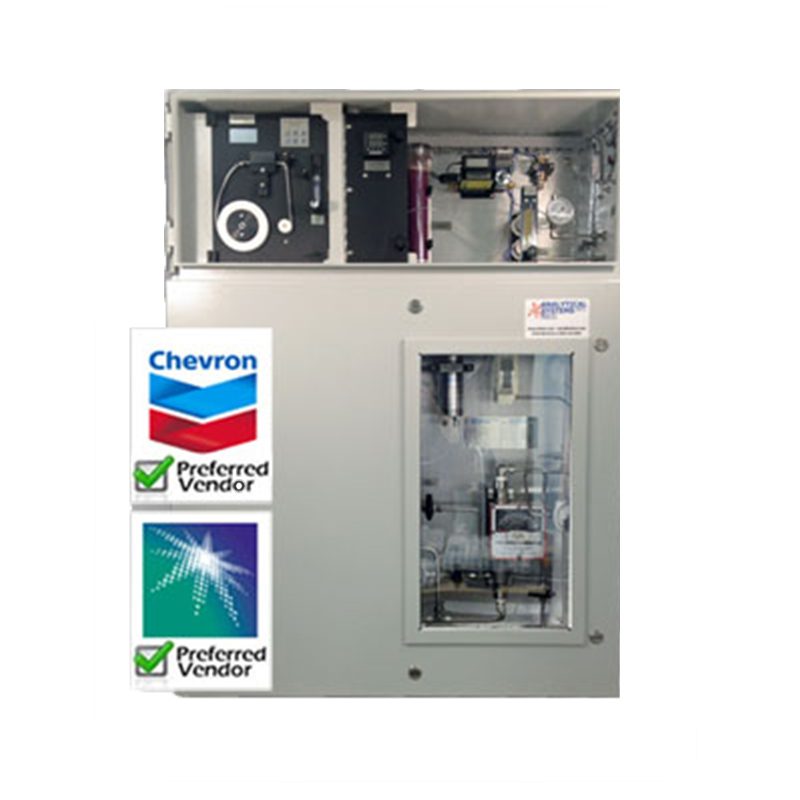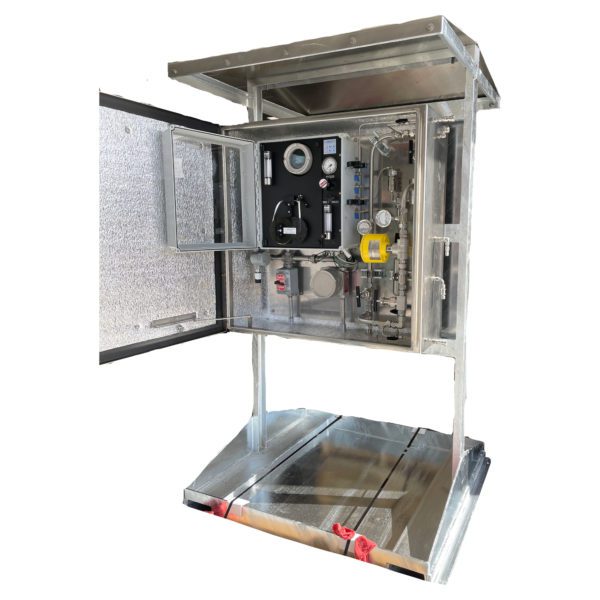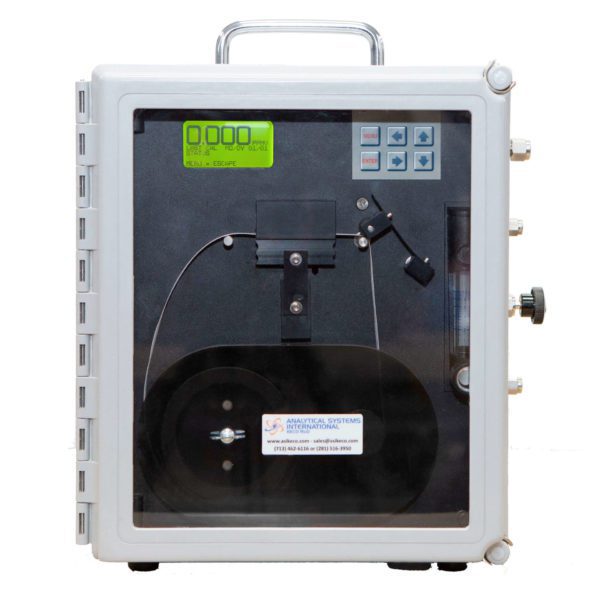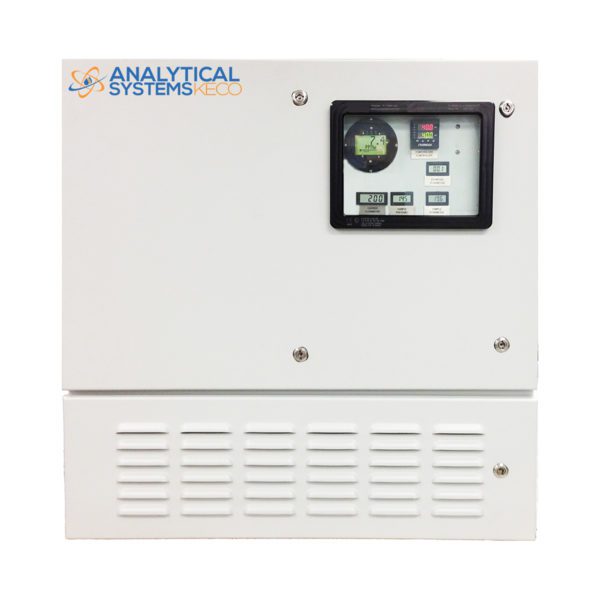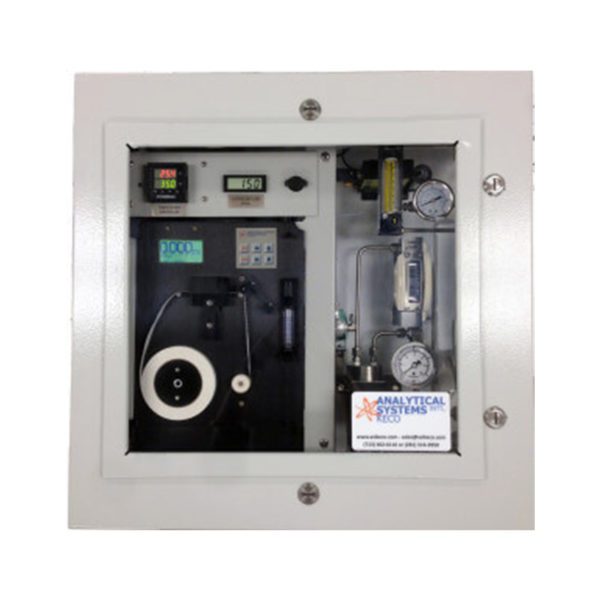Product Overview
With our H2S in crude oil analyzer, the ability to analytically quantify H2S in light, medium and heavy crude oil and condensate is greatly enhanced with the Sample Transfer Stripper (STS) utilizing exclusive KECO Membrane Technologies and rateometric-colorimetric detection technology. This principle of operation is described in various ASTM methods including D4084-82, D4468-85, and D4045-81.
The effective process for measuring H2S in crude oil involves representatively stripping the H2S vapor from the liquid for precise measurement in the gas phase.
The problematic and complicated “headspace” stripping column, which often suffers from liquid carry-over, is not required for this separation. KECO utilizes the state-of-the-art Sample Transfer Stripper (STS) with exclusive KECO Membrane Technologies to efficiently and reliably separate the H2S from the liquid sample for measurement.
The STS is a very simple device that provides an ultra-clean and dry sample to the detector for analysis. The STS uses 90% fewer parts than the complicated “headspace” stripping column method. This results in radically reduced maintenance requirements when compared to the headspace stripping column method and also enhances analytical reliability. KECO is established as the world-wide leader in H2S in crude analysis due to the many benefits of this exclusive technology.
The principle of operation is based on a continuous, free-flowing liquid sample into the heated Sample Transfer Stripper (STS) unit which separates the liquids from the H2S gas sample, based in part on Henry’s Law.
H2S free carrier air then sweeps the H2S sample to the H2S specific detector for quantitative analysis in ppb, ppm, or percent levels. The analyzer does not require zero or span field calibrations. The detection technology is based on chemically specific density changes and is the only detection method that is specific only to H2S.
The analyzer holds its calibration even when faced with process changes and does not require calibrations in the field. Optical illumination and detection are integrated for maximum resolution and accuracy. Economic payout is increased because of this automated and continuous process analyzer.
Interesting in learning more? Read the case studies for this analyzer.
Looking for a laboratory analyzer? View our portable H2S in crude oil analyzer.
Patents and Patents Pending based on letters that are available on request.
Benefits Include
No false high positives
The only detection method truly specific to H2S only, proven by thousands of applications.
Ultra low-maintenance
Advanced Colorimetric-Rateometric Detector is guaranteed hassle-free for long term “hands-free” operation.
Dependable operation
ASI Membrane Technology eliminates liquid carry-over that plagues the antiquated and problematic headspace sampling systems.
No field calibrations
The analyzer does not require calibrations in the field based on exclusive KECO technologies–even with unexpected process changes, no calibrations are required.
Precise measurement
The only technology capable of precise ultra-low ppb and ppm level analysis.
Applications
Safety
Transporting crude oil in truck or vessel can be life threatening to personnel due to unknown levels of hydrogen sulfide contained in the crude. An accident could result in serious injury or death. Other methods to measure H2S include exposing the crude oil to the atmosphere (“Can Test” method, N2 Purge and Trap or lab analysis). The model 205 eliminates health risks of personnel by safely measuring H2S content in a closed loop system, ensuring safety of all operators involved.
Quality Control
Off-spec cargoes and processes incur significant losses due to delays and high costs. “Can Test” method, “Purge and Trap” method and lab analysis are labor intensive, inaccurate and can be dangerous. The model 205 measures H2S 24/7 in real-time, ensuring the most accurate and up-to-date data available to operators. This allows extremely high efficiency ensuring operators meet quality control specifications which saves money. Oftentimes the analyzer pays for itself in only weeks.
Crude Oil Stabilizers / Monitoring for MIC – H2S Cracking
The need to accurately measure H2S in crude is critical to ensure proper product specifications and other purposes. The Model 205 continuously measures H2S to ensure product meets specifications without personnel attendance required or costly lab analysis via inaccurate grab samples.
Corrosion Control
Hydrogen Sulfide is corrosive to pipelines, tanks, FPSO and other holding vessels. The model 205 will accurately measure H2S levels and allows historical data to help treat the H2S before cost intensive measures must be taken.
Condensate
Condensate is a valuable product that is often transported by truck for sales. The 205 is a dependable analyzer used to accurately measure H2S in condensate for quality control and transportation safety.

